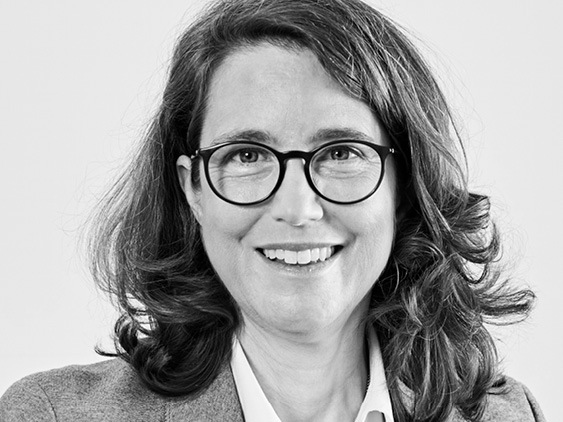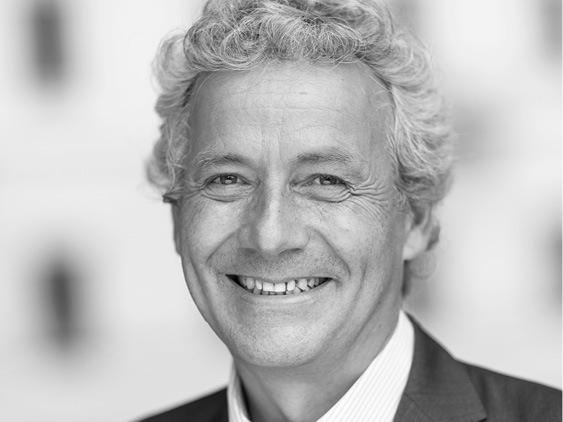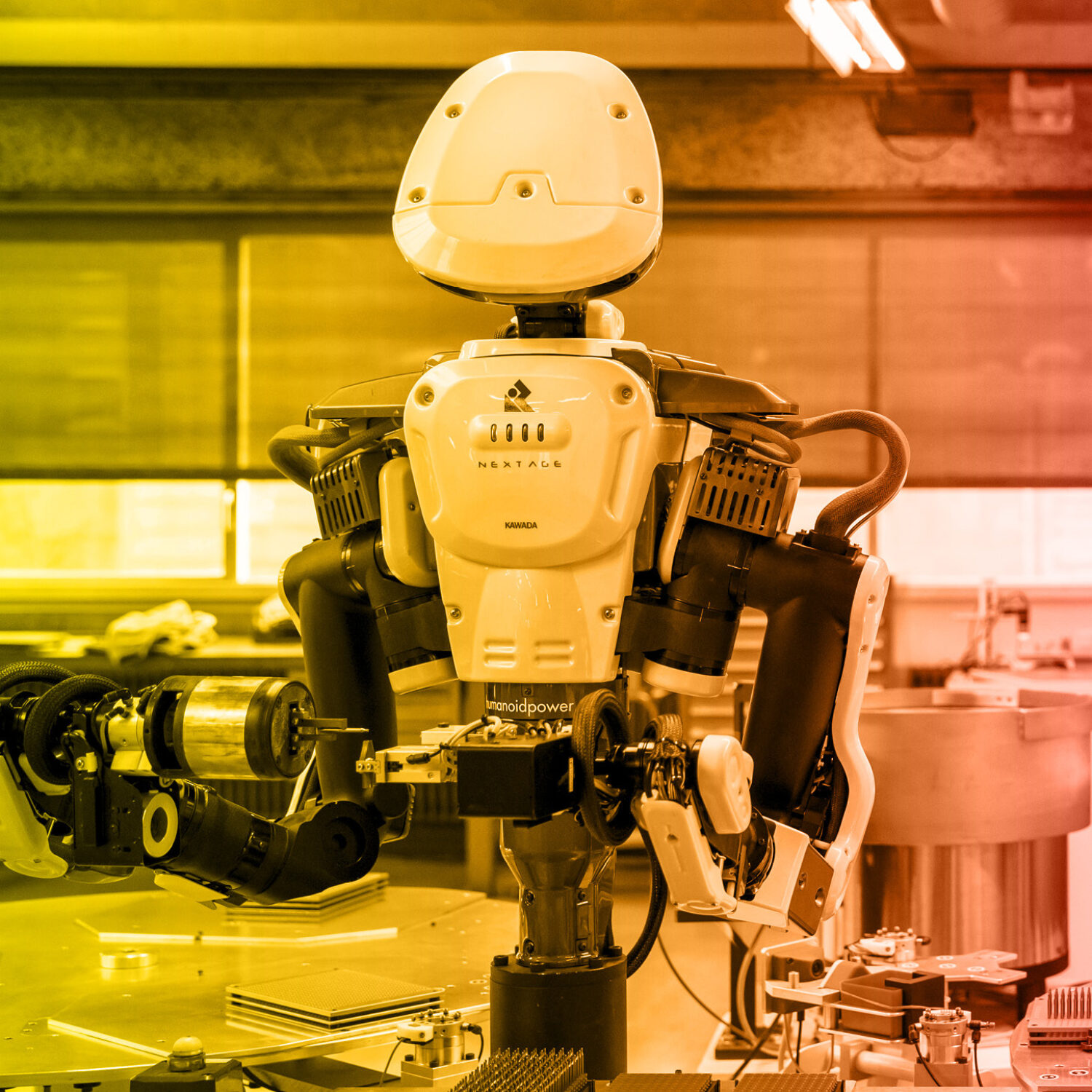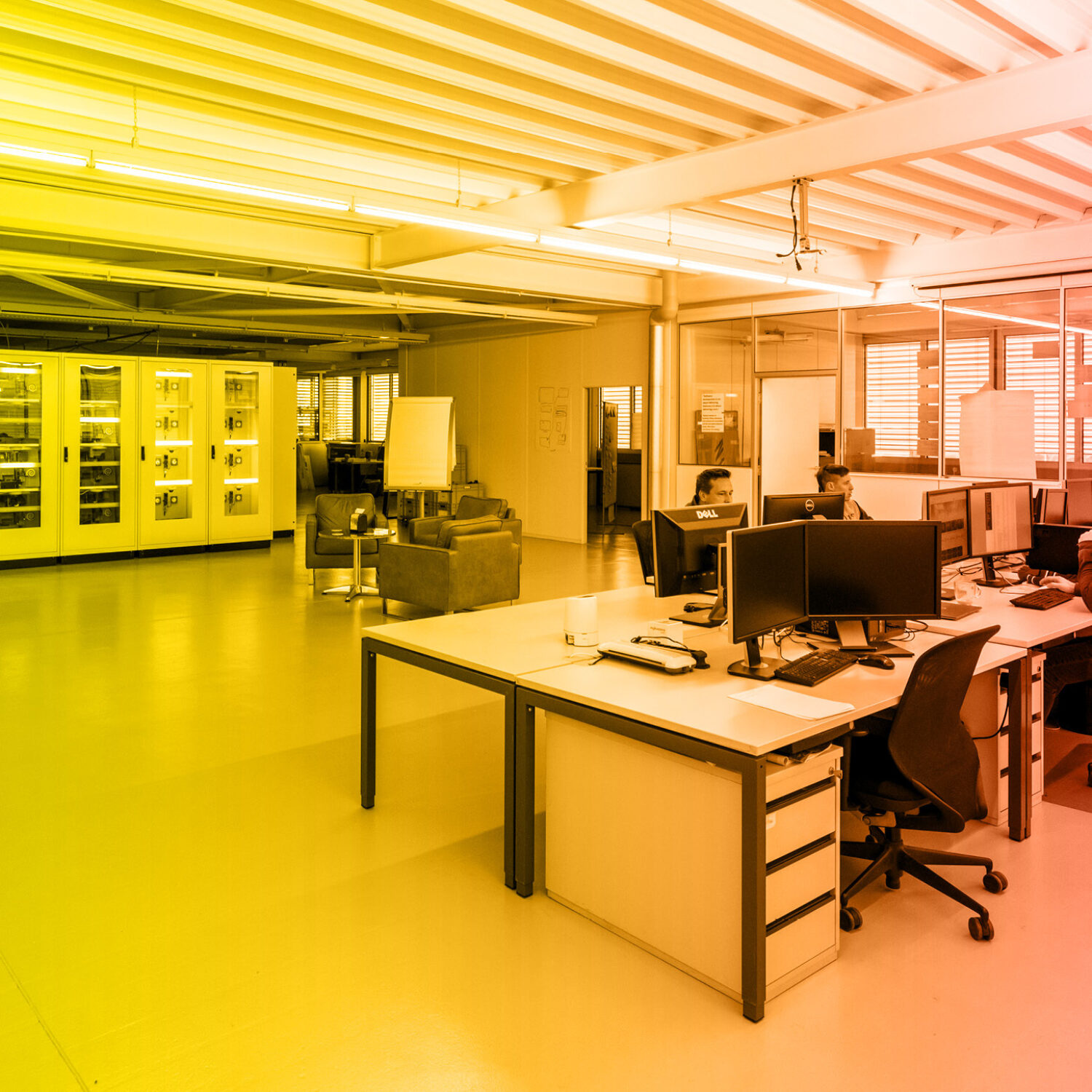Themed article
Swiss SMEs and innovations
Two innovation mentors report on their everyday experiences
SMEs and other private or public organisations with fewer than 250 FTEs can apply to Innosuisse for mentoring free of charge. Experienced innovation mentors support the SMEs in structuring their innovation ideas, finding the right research partner or submitting a project application. They also advise companies on finding sustainable funding for their innovation project. Gabriele Schwarz and Stefano Colombo talk about their experiences with SMEs.

Four questions for…
Gabriele Schwarz
Gabriele Schwarz studied information management at the University of St. Gallen and wrote her doctoral thesis on logistics concepts in mechanical and plant engineering. In 2012, she founded Innovista Management, a company specialising in training and support for innovation and technology projects. Since 2013, she has also been an innovation mentor for Innosuisse and has supported around 300 project applications in the areas of ICT, technology, energy and social sciences.
How can you help SMEs as an innovation mentor?
My role is different for each project and also depends on what stage the innovation project is at: I may be there from the ideation process right through to planning the project for the funding application, or I may be there for individual steps only. I have to listen a lot and ask questions, particularly at the beginning. At some point, you get a feel for where the shoe pinches.
As a mentor, I bring structure into it. We may even write a glossary with one another as a first step in developing a project to make sure everyone is on the same page. The more detail we go into when clarifying open questions, the more friction there is at the beginning, but the better the partners work together following on from this.
When coming up with ideas, the capacity for joined-up thinking is very important. Once all questions have been clarified and the application is being prepared, it is important to proceed work package by work package. The ability to query things and make adjustments is important, but it’s a real pet peeve of mine when those involved in the process think everything can simply be changed again if needed. This has a negative influence on a project application.
A planned project always brings together a large number of thematic experts. So it’s important to have someone keeping an eye on everything. My expertise as a mentor lies in the innovation process. My task is to find out where the predetermined breaking points might be. Let me apply that to a hangig mobile: Let’s think of every individual piece of the mobile as an expert. Each and every one of them has solid knowledge in a particular field. As a mentor, I try to bring these highly specialised parts into contact with one another. If just one part of a hanging mobile becomes heavier, the whole thing becomes unbalanced.
One of my mentoring colleagues once said: “We are like a dating service for industry and research.” I find that an apt comparison.
It is important in this work to be well connected. It is equally important for me as a mentor to go on site now and then, such as to the factory floor. This helps with understanding, and you get an idea of what the solution might look like. By not being a thematic expert, you see things differently and ask questions.
Give us a few specific real-life examples.
One of my favourite examples taken from my day-to-day mentoring is a project with Appenzell Railways. This SME with 130 employees regularly has to deal with a certain weather phenomenon in winter. This is the “Laseyer wind”, a downdraft near Ebenalp, which accelerates and begins to spin, and can even blow rail carriages off the tracks because of how strong it is. For safety reasons, whenever this weather phenomenon is forecast, the railway company is forced to switch over to a bus service. But there is significant effort involved in order to do so, the changeover is expensive, and it has an impact on interregional commuter traffic. And after all that, the wind often does not even appear at all.
Appenzell Railways therefore wanted to improve its existing, conservative warning system. For the funding application, we worked together to analyse the source of the problem, who could help and what partial solutions already exist, such as at the wind-tested Säntis cable car or the Jungfraubahn. One jigsaw piece at a time, we put the individual sub-steps together.
After the positive funding decision by Innosuisse, ETH Zurich searched for a wind pattern. MeteoSwiss provided its measuring stations, data and models. The main question here was how to evaluate the data using artificial intelligence and integrate the evaluations into the rail control system. A decision must be made quickly in each case. The team also used a high-performance computer in Ticino or the wind tunnel at RUAG in Emmen.
In the end, the project partners found an early warning system that is much more accurate than previous forecasts, and Appenzell Railways is forced to switch to a bus service less often. I’m very pleased to see how well this project has been implemented.
In another application, the company Adnovum Informatik AG planned to revolutionise the automotive market. The idea here was to write the entire lifecycle of a car on blockchain – from import all the way through to scrapping. Instead of data being stored somewhere in local databases, everything was to be digitalised and made available for everyone to see, including the driver’s logbook.
This cardossier application was one of the best projects I've ever supported. Together with the team, we laid the foundations for building the ecosystem – together with the University of Zurich, Lucerne University of Applied Sciences and Arts, Mobility, AMAG, AXA Insurance, PostFinance and other partners. We were able to get all these people on board for the funding application and had the whole ecosystem together. The only step left in the application process was to submit the project. The road traffic office for the canton of Aargau was reluctant for some time for capacity reasons, and the partners already wanted to write off the project. I called them up one last time and told the head of the road traffic office that this was the best project I had ever set up as a mentor. After I hung up the phone, the head of the road traffic office called back and said: “Okay, we’ll do it.” This was a great moment for all of us.
Which Swiss SMEs are particularly innovative? And what can prevent a company from being innovative?
Among my clients I find many innovative SMEs in software, medtech, engineering and energy.
A traditional SME, such as a family business in the manufacturing sector, is generally well positioned for innovation: the decision-making paths are short and the structures agile. In most cases, the Executive Committee or Board of Directors is behind an innovative idea, you rarely have to do extra rounds, and the budget is released relatively quickly. This often works better than in large companies, where decisions go through various hierarchical levels. In traditional SMEs, there is often a patron or owner who is very active in the business. It’s important to get them on board.
Time and money are factors that can stand in the way of innovation: an SME has so few resources that there is no time available to spend on tasks outside of day-to-day operations. Or there is simply a lack of money. A lack of networking is another important point: if you don’t have time to go to events, you often don’t know what’s going on in the industry.
Even though many projects that I support go up to the point of application submission are in the technical area, work on innovations ultimately depends on people. I have made a personal evaluation of my previous projects: for something to work, the team was always the deciding factor. If the mood was constructive, we always found a solution. If the team didn’t get along with one another, then it didn’t work out in the end. It also becomes difficult when there are hidden agendas or internal power struggles within a company.
You talked about favourite projects. Have you also had favourite clients? Which clients would you like to mentor?
No matter whether it’s for an initial review, help finding a research partner or support for a project application, it helps if a company applies for mentoring at as early a stage as possible. This makes it much easier to set the course and effectively launch an idea for a research-based innovation.
In consulting work, I like people to have an open ear, a degree of curiosity and the ability to question things. I have a hard time speaking with people who only want to have their opinions confirmed.
I like to see companies that are passionate about what they do, and that don’t simply turn up because the federal government is proposing support. People who don’t just see the project as their job, but who put their heart and soul into it. There are so many things that can go wrong when preparing a project application, whether that’s a partner dropping out or a lack of finances, so a sense of humour is required. It helps when you can cry and laugh together. Developing an innovation requires good communication tolerance.
After having supported more than 300 project submissions as an Innosuisse mentor, I am still passionate about my work and proud of “my” SMEs. Sometimes they don’t even recognise how much raw potential they really have.

Four questions for…
Stefano Colombo
Stefano Colombo studied electrical engineering at the Swiss Federal Institute of Technology (ETH) in Zurich. From 2004 to 2014, he headed up Alpiq Energia Italia. Today, he is CEO of the consultancy firm STAN2SERVICES Srl and active on several boards of directors and in various associations. He has been an innovation mentor for Innosuisse since 2019.
How do you bring companies and research together?
As a mentor in Ticino, I mainly look after projects in the Italian-speaking part of the country and, because of my professional background, particularly in the field of energy.
Most of the time, I can quickly tell whether an idea will work for an Innosuisse funding programme. The project must be innovative – in other words, the idea must be new and ideally make it to a patent. It is equally important, however, that companies are able to take their time. If, for whatever reason, a product needs to be on the market within a few months, it is unlikely to be eligible for funding from Innosuisse since science-based innovation takes time.
In many projects, I am already involved from as early on as the initial review of the project idea, where I help with finding the right research partner and provide coordination and support with regard to writing the application. From time to time, however, I also have to mediate between the project partners.
I often work on projects that a company wants to implement together with the Scuola universitaria professionale della Svizzera italiana (SUPSI) in Lugano. The two partners have often already found each other and are working together. I am called in to answer specific questions and look at individual problems before the application is submitted. These are interesting and productive mandates in which the partners usually work together without any problems.
Every now and then, however, companies come to me with false expectations: Once, an SME assumed that the research partner and mentor were doing all of the work. After explaining that this was a collaboration, not a work order, I never heard from the company again.
So what are some potential hurdles when it comes to collaboration?
Sometimes not everything runs smoothly in the collaboration, so a third party is needed to act as a mediator – I would then assign the roles regarding who could do what in the application, for example.
I was once called in to help when there was conflict between a company and its research partner. I had to mediate between the two parties, and coordinate and motivate them to submit an application. I got them to understand that while it is always possible to change research partner, it is not always particularly quick or easy to do so. I acted as an interface between the two parties and also did motivational and coordination work to keep the funding application moving forward.
The main problem here was that the SME had expectations that were too high, and the research partner did not have as much time as the company had imagined.
How do you rate the innovative strength of Switzerland and its SMEs?
Switzerland has rightly come out on top in international innovation rankings for years. Research in this country is very innovative, and many departments at universities are world-class.
From my experience, I consider Swiss SMEs that are involved in IT and deal with topics such as blockchain or artificial intelligence to be particularly innovative. For companies that develop hardware, I think there is still more potential for innovation, particularly in the energy sector.
Compared with Italy, where I have also worked, Swiss companies innovate considerably more. In my opinion, this has less to do with a lack of financial support and more to do with the general mindset when it comes to the subject of change. Innovation generally plays a very important role in Switzerland, thanks in part to Innosuisse.
In what way?
Through its programmes, Innosuisse has really helped to bring research and business closer together.
In my days as an electrical engineering student at ETH, this wasn’t yet the case: back then, research was more concerned with itself; whereas now the focus is much more on concrete applications and business models. That’s evident just from the fact that there are a lot more spin-offs than there were back then. In rankings, universities are now also measured and compared against one another using KPIs as key indicators of success and failure.
Today, one of the main goals for universities is to go to market with innovations. It was already important back then, but it wasn’t a top priority. Nowadays, the importance of collaboration between research and industry has been acknowledged. Innosuisse has made a major contribution to this change in people’s way of thinking.

